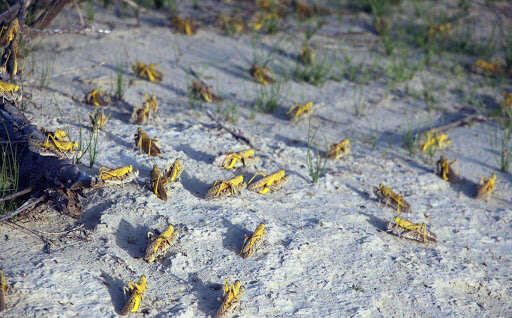Some $4.7m allotted to counter desert locust outbreak

TEHRAN – A total budget of 200 billion rials (nearly $4.7 million at the official rate of 42,000 rials) has been allocated to fight desert locust swarms in southern parts of the country, head of Disaster Management Organization, has stated.
Following the influx of locusts into southern parts of the country and the damage brought to the agricultural and horticultural sectors, Disaster Management Organization recently proposed the allocation of funds to deal with these pests, Esmaeil Najjar stated.
The budget has been approved by the Planning and Budget Organization, so it will soon be provided to the related organizations to fight against the locust plague, he explained.
The locust affects the food supply cycle by causing damage to agriculture and horticulture, for this reason, it is important to prevent their invasion and to control the situation in the southern regions of the country, which are most affected by the crisis, he concluded.
Last year, desert locusts penetrated the provinces of Bushehr, Fars, Hormozgan, Kerman, Khuzestan, and Sistan–Baluchestan, which resulted in major losses on over 500,000 hectares of farmlands and gardens.
FAO explains that desert locust infestations are normally present in southeast Iran during the spring. Local breeding coincides with seasonal rains that often occur from about February or March until April or May. In warmer years, rains that occur during the winter can lead to late winter and early spring breeding.
By June, vegetation is usually dry again and any adults that were produced during the spring move east towards the Indo-Pakistan summer breeding areas. Most of the spring breeding occurs along a 450 km stretch of coastal plains on the Arabian Sea from Jask (Hormozgan) and the Strait of Hormuz and the Gulf of Oman in the west to Chabahar and Gwadar (Sistan-Baluchestan) near the Pakistan border in the east.
The most important area along the coast is the Vashnum Plains near Chabahar. If rains fall and temperatures are warm, breeding may also occur in the interior, namely the Jaz Murian Basin from Kahnuj to Iranshahr, and in the Zaboli, Suran, and Saravan valleys that lead to Panjgur, Pakistan. Desert Locust adults rarely cross the mountains to the north of these areas.
FB/MG
